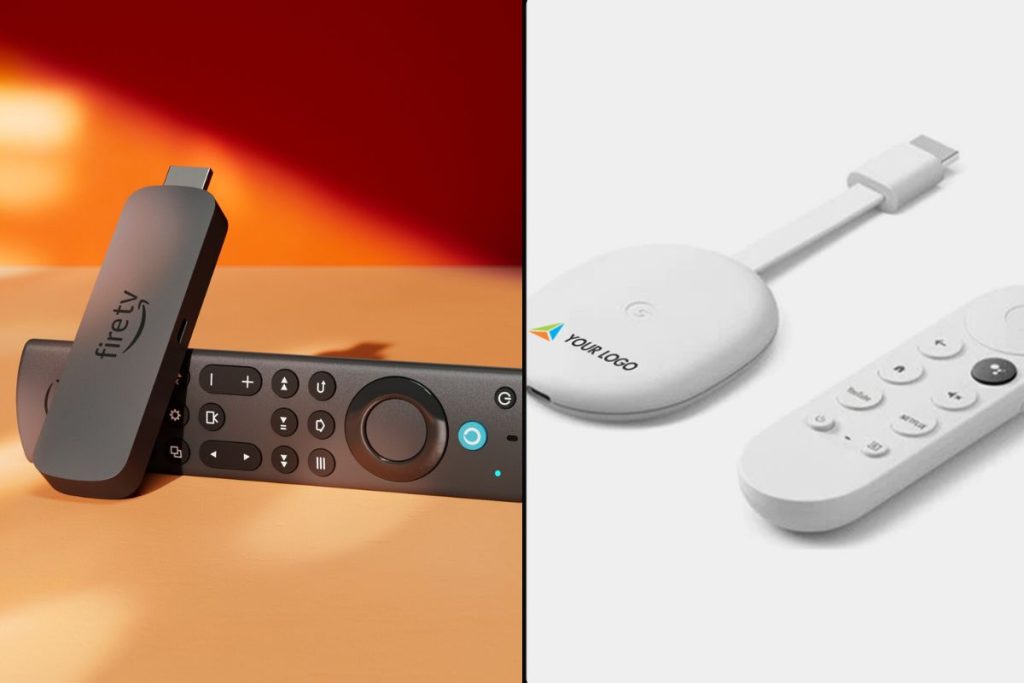When you’re in the market for a streaming device, two names will likely pop up: Amazon’s Fire TV Stick and Google’s Chromecast. Both are powerful, affordable and offer a seamless way to stream content directly to your TV.
However, choosing between the two can be tricky because they overlap in a lot of ways. After spending some time with both devices, I’ve put together a detailed comparison to help you decide which one fits your streaming needs best.
For this comparison, I’ll be focusing mainly on the features of the 4K models of both variants, specifically the Fire TV Stick 4K Max and the Chromecast with Google TV 4K.
Here’s a breakdown of the specs for both the products. I have also shared details on these in the article:
Specs Comparison
|
Feature |
Fire TV Stick (Newest Edition) |
Chromecast (Newest Edition) |
|
Operating System |
Fire OS |
Google TV |
|
Voice Control |
Included |
Included |
|
Virtual Assistant |
Alexa |
Google Assistant |
|
Processor |
2.0 GHz Mediatek MT8696D (Quad-Core) |
1.9 GHz Cortex-A55 (Quad-Core) |
|
Connectivity |
Bluetooth 5.2 + BLE, Wi-Fi 6 |
Wi-Fi 5 |
|
Available Ports |
DMI, Micro-USB |
USB-C |
| Audio | Dolby Atmos |
Dolby Atmos |
|
Memory (RAM) |
2GB |
2GB |
|
Internal Storage |
16GB |
8GB |
| Color Options | Black |
Sky, Sunrise, Snow |
| Price Range | $17.99 – $79.99 |
$29.99 – $69.98 |
Price
When it comes to price, Fire TV Stick takes the lead with its wider range of options. Amazon has built several models to cater to different needs, starting with the affordable Fire TV Stick Lite at $17.99, all the way up to the Fire TV Stick 4K Max, which is the most feature-packed model priced at $79.99.
On the other hand, Chromecast with Google TV 4K is priced more affordably at around $69.98. While Chromecast offers fewer model variations, it’s an excellent device if you’re already in the Google ecosystem.
In my testing, the price differences between the Fire TV Stick 4K Max and the Chromecast with Google TV 4K were noticeable in terms of performance and features.
Here’s a breakdown of the price range for all the Fire TV Stick variants:
- Fire TV Stick Lite — $17.99: Comes with a Voice Remote Lite.
- Fire TV Stick (3rd Generation) — $19.99: Comes with an Alexa Voice Remote and TV controls.
- Fire TV Stick 4K — $43.69: Comes with an Alexa Voice Remote, supports 4K.
- Fire TV Stick 4K Max — $79.99: Comes with an Alexa Voice Remote, supports 4K, and has a faster processor with Wi-Fi 6 support.
Here’s a breakdown of the Chromecast variants and their specs:
- Chromecast (3rd Generation) — $29.99: Simple Chromecast device with casting functionality.
- Chromecast Ultra — $49.99: Supports 4K and bundled with Google Stadia.
- Chromecast with Google TV 4K — $69.98: Comes with a voice remote and Google TV interface.
Video & Audio Quality
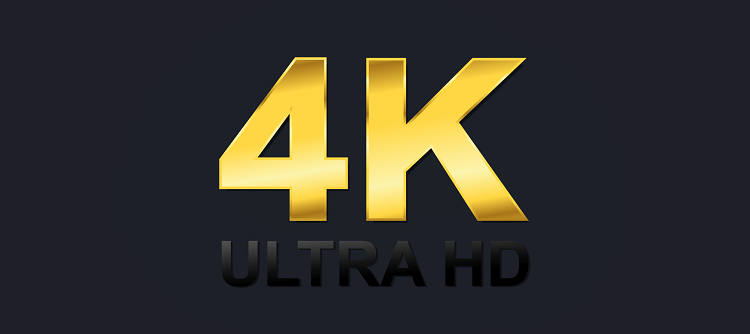
Both the Fire TV Stick 4K Max and Chromecast with Google TV 4K offer excellent video quality, supporting 4K Ultra HD resolution and HDR formats like HDR10, Dolby Vision, and HLG. They provide a fantastic visual experience with vibrant colors and sharp detail.
In terms of audio, both devices support Dolby Atmos, ensuring immersive sound when paired with compatible setups. However, the Fire TV Stick 4K Max has a slight advantage in frame rate matching and offers a slightly more dynamic audio performance in Dolby Atmos content. Both are great options, with minimal differences in overall quality.
Here’s a quick comparison of the audio and video capabilities across all variants:
|
Device |
Full HD (1080p) | Ultra HD (4K) | HDR Support | Dolby Vision | Dolby Atmos |
|
Fire TV Stick Lite |
✔️ | ❌ | ✔️ | ❌ | ✔️ (HDMI) |
|
Fire TV Stick |
✔️ | ❌ | ✔️ | ❌ |
✔️ |
|
Fire TV Stick 4K |
✔️ | ✔️ | ✔️ | ✔️ |
✔️ |
|
Fire TV Stick 4K Max |
✔️ | ✔️ | ✔️ | ✔️ |
✔️ |
|
Fire TV Cube |
✔️ | ✔️ | ✔️ | ✔️ |
✔️ |
|
Chromecast (3rd Gen) |
✔️ | ❌ | ❌ | ❌ |
❌ |
|
Chromecast Ultra |
✔️ | ✔️ | ✔️ | ✔️ |
❌ |
| Chromecast with Google TV | ✔️ | ✔️ | ✔️ | ✔️ |
✔️ |
WiFi Connectivity

One area where the Fire TV Stick pulls ahead is in WiFi connectivity. The latest Fire TV Stick models come with Wi-Fi 6 support, which provides faster speeds and better overall performance, especially if you have a compatible router.
Chromecast with Google TV, on the other hand, still sticks to Wi-Fi 5, which is fine for most homes, but it may lag behind if you have a fast Wi-Fi 6 network. During my testing, the Fire TV Stick was noticeably quicker when streaming high-definition content, with fewer buffering issues on Wi-Fi 6. If you have a Wi-Fi 6 router, it’s a clear win for the Fire TV Stick.
User Interface
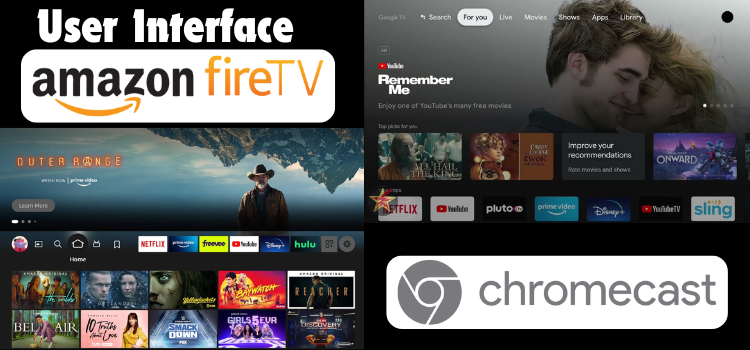
When it comes to navigating through the interface, FireStick and Chromecast are both pretty straightforward. The latest FireStick update lets you create multiple user profiles, which is handy if you’re sharing the device.
However, I find that the FireStick’s interface, while easy to use, feels just a bit clunkier compared to Google TV. It does a good job showing you the channels and apps you use most, and it tosses in a bunch of recommendations, but somehow it feels less tailored to me.
Now, here’s the thing—FireStick really pushes Amazon Prime Video content. If you’re already deep into Prime, that might be great. But if you’re not, it could get a little annoying. Google TV does something similar with Google Play, but it feels more neutral overall.
It doesn’t feel like Google TV is pushing one service as much as FireStick does with Amazon Prime. I personally like that because it feels more balanced and less focused on just one streaming platform.
Processor and Performance
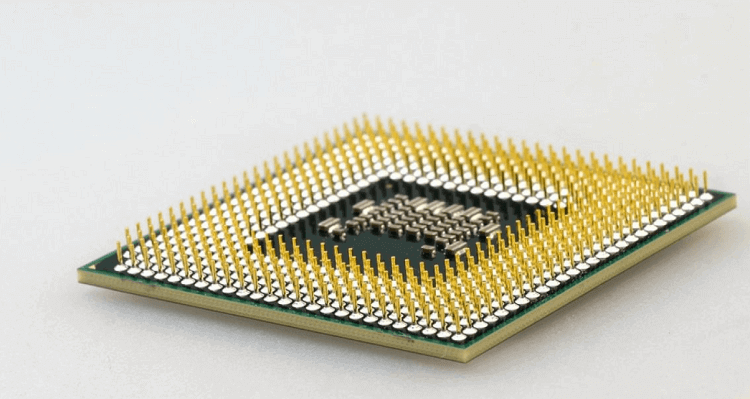
Both devices offer solid performance, but the Fire TV Stick has a slight edge with its 2.0 GHz quad-core processor compared to Chromecast’s 1.9 GHz processor.
Using both devices, I found that the Fire TV Stick handled app switching and heavy streaming tasks slightly faster. The difference isn’t massive, but if you’re someone who likes to quickly hop between apps or run more tasks, the Fire TV Stick will feel a bit more responsive. However, for regular streaming, both devices perform great!
App Availability
Fire TV Stick and Chromecast offer access to all the popular streaming apps like Netflix, Hulu, and Disney+, so you won’t miss out on content with either one. However, Fire TV Stick leans heavily into Amazon’s ecosystem, giving Prime Video users a more integrated experience. Additionally, the Amazon App Store has 534,026 apps, offering a wide variety of options beyond just streaming services.
Chromecast shines when it comes to Google’s ecosystem, with its broader search functionality pulling content from multiple services, making it feel like a more flexible option. While Chromecast has access to the Google Play Store, it can’t access every app, which is a bit of a limitation. In my experience, both devices cover almost all the streaming services I use, but Chromecast’s ability to aggregate content across platforms still makes it feel more versatile, despite the app restrictions.
Storage
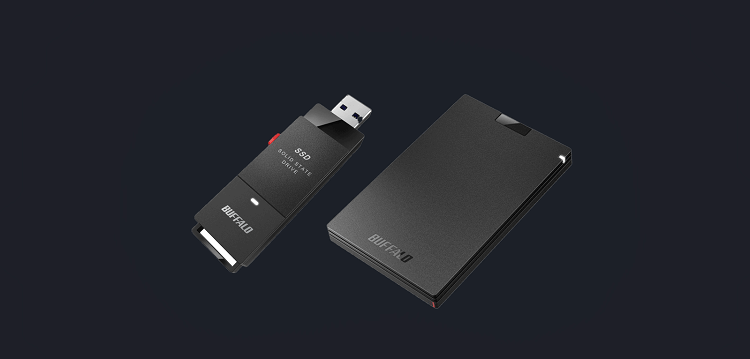
Storage is one area where the Fire TV Stick definitely leads the competition. The latest Fire TV Stick model, 4K Max comes with 16GB of internal storage, while Chromecast only offers 8GB. I noticed this difference when downloading apps and games onto both devices.
If you’re someone who likes to download and store a lot of apps, Fire TV Stick’s larger storage will be a benefit. On the flip side, if you don’t plan on downloading much, Chromecast’s 8GB should be sufficient.
Remote Control
Both remotes are excellent, but they have different strengths. Chromecast’s remote has a sleek, minimalist design with a well-placed Google Assistant button that works great for voice control.
The Fire TV Stick’s remote, however, stood out with its Alexa button and dedicated buttons for popular streaming apps like Netflix and Hulu. I found Fire TV Stick’s remote better due to those extra shortcut buttons, but if you prefer something more streamlined, Chromecast’s remote will feel nicer in your hand.
Design
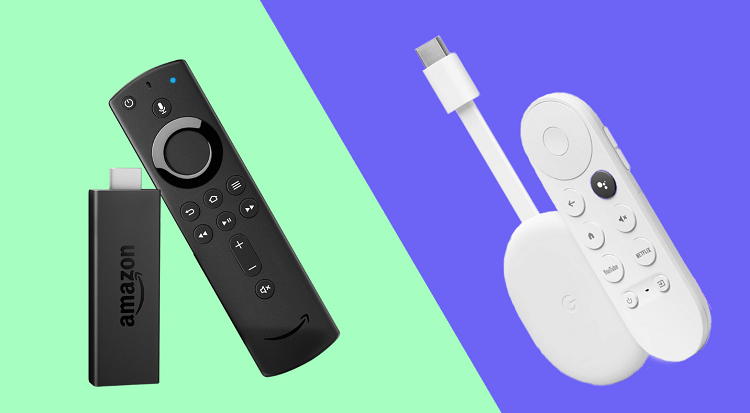
Design-wise, Chromecast takes the lead with its modern, circular shape that comes in three colors: Sky, Sunrise, and Snow. It has a sleek look that doesn’t block other ports on your TV.
Fire TV Stick, on the other hand, has a practical design, resembling a large USB stick that plugs directly into the HDMI port. While it works just fine, it doesn’t have the same aesthetic appeal as Chromecast.
Conclusion
After testing both devices, it’s clear that each has its strengths. If you’re looking for a budget-friendly option with a range of models to choose from, the Fire TV Stick is your best bet. It also wins if you need more storage and faster Wi-Fi.
On the other hand, if you’re deep into Google’s ecosystem or prefer a cleaner design and seamless content collection, Chromecast is a great choice. Ultimately, it boils down to your personal preferences and needs.
For families, Fire TV Stick’s multi-user profiles and app shortcuts might be a better fit, while Chromecast will appeal to those who prioritize simplicity and integration with Google services.

